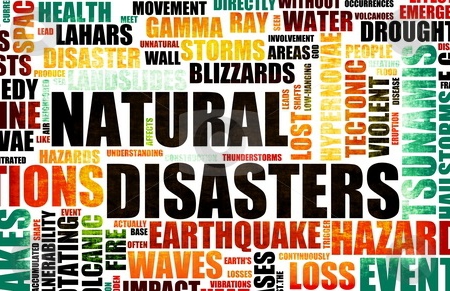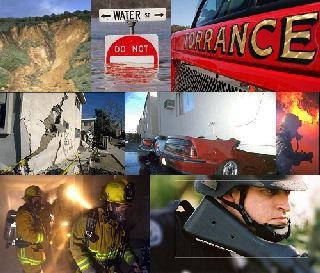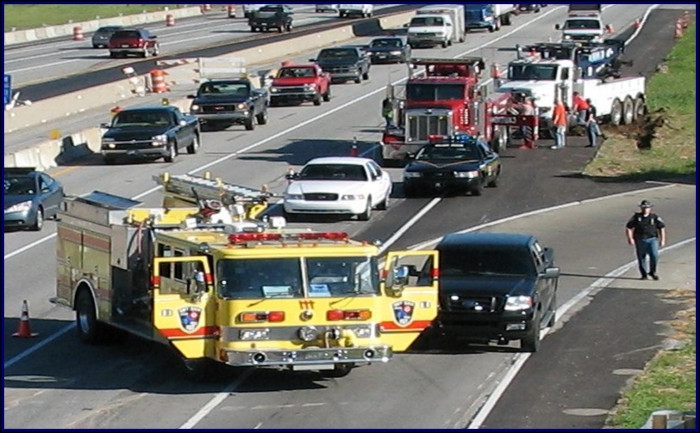Dangerous refers to factors that lead to health problems, various injuries, and even disability. This kind of property is possessed by systems that have chemically, biologically, and technically active components and conditions that do not correspond to the life of people.
If we talk about an adult, then his dangers can lie in wait at work, and during rest or travel, and on the street, in transport, and even at home. For children, the circumstances that may have arisen on the way to school or during the lesson, when playing at home (especially the child alone), can be dangerous factors.
All harmful and dangerous factors create various kinds of situations around a person that can become “catalysts” for accidents.
Interpretation of the concept under consideration
Dangerous situation - this is such an unfavorable environment, inside of which there are dangerous and harmful factors of various origin, threatening human life, health, as well as its environment and property.
In the course of his life, the representative of the human race can be at the epicenter of any harmful situation (get injured, get lost, become a victim of an attack, etc.), when it is necessary to mobilize all available forces, skills and abilities. This kind of situation is called extreme (external assistance is excluded or limited).
According to M.P. Frolov, S.V. Petrov, A.T. Smirnov, E.N. Litvinov extremely dangerous situation - this is a combination of this kind of circumstances requiring the protection of human health and human life as much as possible of all available spiritual and physical forces. It appears, for example, when a person finds himself in icy water, either in the epicenter of a snow storm, or in a fire.
Nowadays, extreme sport has become popular, where it is required to show all the available skills, abilities, and opportunities in order to survive in autonomous, super-difficult conditions of existence.
Also, test pilots, rescuers, astronauts, sailors, etc., whose profession is recognized as dangerous, are preparing themselves for possible extremely dangerous situations.
Dangerous and emergency situations: distinctive features
Quite often, due to natural phenomena, environmental disasters, socially dangerous situations, technological disasters and accidents, the conditions required for the normal life of people are violated, a real threat to their health, life, property appears. All this extremely dangerous situations (Emergency). They require certain efforts from government agencies and the population regarding the prevention and elimination of their consequences.
An extremely dangerous situation is man-made, biological, natural, socio-criminal, military, environmental.
Emergency of nature - natural disasters of atmospheric, hydro, lithospheric origin. Under technogenic their nature is understood as catastrophes, accidents that occur within the technosphere and which are associated with household, human production activities, as well as transport. Extremely dangerous social situations - circumstances contrary to Russian law.
Biological emergencies - diseases of the population, animals of a mass nature of infectious origin (episodes, epiphytias, epidemics). Military extremely dangerous situation - the situation that leads to the use of weapons of all kinds against a different state, population. This also includes the suppression of the people's will of their own state.

Natural hazardous situations: sources, causes
The outbreak is a dangerous natural process or phenomenon. The occurrence of dangerous situations of this kind occurs for the following reasons:
- earthquake;
- landslide;
- sel;
- erosion;
- avalanche;
- strong wind;
- precipitation;
- frosts (frosts);
- thunderstorm;
- volcanic eruption;
- collapse;
- karst;
- tsunami;
- flood;
- tornado;
- drought;
- natural fire;
- fog.
The striking factors of the above phenomena are a threat to the health and life of people, as well as agricultural plants, animals, the natural environment and economically important objects. However, not all dangerous natural situations lead to emergencies (they are not recorded in places where a person is not engaged in any activity and does not live). They develop solely in the event of a threat to life, human health or the environment due to the occurrence of the situations under consideration.
Extremely dangerous situations of a natural nature - natural disasters (harmful circumstances of geophysical, hydrological, geological, atmospheric and other origin on a scale leading to a disaster, which is characterized by a sudden disruption in the normal functioning of the population, destruction and destruction of material values, death and damage to people and animals).
Classification of natural disasters based on the conditions of their occurrence
They can be divided into the following groups:
1. Meteorological:
- storms (strong, extended air currents moving at a speed of over 20 m / s);
- tornadoes (atmospheric whirlwinds that appear in a thundercloud and spread down, as a rule, to the very surface of the earth, are a dark cloudy sleeve or trunk with a diameter equal to tens, hundreds of meters);
- hurricanes (large-scale atmospheric vortices moving with wind speeds up to 120 km / h or up to 200 km / h, if we are talking about the surface layer).
2. Geological:
- earthquakes (underground vibrations, tremors of the earth's surface, which appear due to sudden ruptures and displacements in the earth's crust or upper mantle and extend over considerable distances as elastic vibrations);
- snow avalanches (snow mass that slides or falls from the slopes of the mountains (round) and moves at a speed of approximately 20 - 30 m / s).
3. Hydrological (hydrometeorological):
- flooding (flooding of the area with water formed due to prolonged rainfall, snowfall, wind surge on the coast, severe snowmelt, which causes material damage and causes damage to human health or even leads to their death);
- tsunamis (sea waves that occur due to a shift down or up of extended zones of the seabed during coastal and underwater earthquakes).
4. Mass diseases - infections (diseases that arise due to the introduction into a macroorganism (animal, plant, person) of a living specific infectious agent: virus, bacteria, fungus, etc.).
5. Natural fires (uncontrolled burning of vegetation that spreads through the forest).
Man-made emergencies: definition, criteria for assessing their consequences
Extremely dangerous situations of technogenic character - industrial accidents, accompanied by the release of storage water; explosions and fires; transport accidents (car, sea, river, rail).
Emergencies are divided into the following types of accidents:
- with the destruction of technical systems, vehicles, structures and without human casualties;
- disasters (the destruction of all of the above tools and systems, as well as the death of people).
Criteria for assessing the consequences of any type of disaster:
- number of victims;
- the number of wounded (disabled, dead from severe wounds);
- distant mental and physical effects;
- material damage;
- social and individual shock;
- economic consequences.

What can lead to this kind of situation?
The causes of dangerous situations (accidents) are as follows:
- miscalculations during the design of modern buildings, insufficient level of their reliability;
- construction work of inadequate quality or deviation from the project plan;
- lack of a clear plan regarding the location of production;
- a serious violation of the process due to lack of training or lack of discipline, negligence of staff.
Certain accidents, disasters in transport and industrial facilities may be accompanied by the release of chemical substances, radioactive substances, explosions, fires, etc.
What dangers await drivers on the road?
Each time a driver sits behind the wheel of his car, he must remember that any vehicle is a source of increased danger, in his hands is the life of those close to him, who are in the car with him, and other participants in this traffic.
The following dangerous situations on the road (threats) can be distinguished:
- Frontal collision. In a situation where the oncoming car does not move in its lane, first of all, another driver needs to smoothly slow down and signal the offender with headlights or an audible signal. Further, if the road hazard situation has worsened (there is a real danger of a collision), it is recommended to immediately reduce the speed and drive the car to the right.
- Side collision. In this situation, extreme braking should be applied and try to avoid an accident (give the "intruder car" the opportunity to drive first, despite the pre-emptive right to travel). In the case when extreme braking does not give a result, it is necessary to accelerate sharply, thereby passing the place of conflict. In carrying out this maneuver, a warning signal should be given (sound or headlights). In a situation where collisions cannot be avoided, you should try to transfer it from the side to the tangent (turn the steering wheel in the direction of the attacking car).
- A passing collision. It is most often the result of an incorrectly set distance. It is necessary to carefully monitor the movement of the vehicle in front, to conduct advanced monitoring (determine in advance changes in the traffic situation that can cause the vehicle traveling ahead to brake sharply). If there is an increase in speed, it is recommended to increase the distance. Braking should be performed smoothly in order to avoid skidding, collision of the car following you, and do not forget about the timely warning signal.
These are just some of the dangerous traffic situations.

Social Emergencies
The processes and phenomena of this orientation are filled with sharp, insoluble contradictions, cataclysms that are acquiring a global character in modern times. A socially dangerous situation is a harmful situation in a particular territory that has arisen due to a dangerous social process or a phenomenon that has resulted in human casualties or damage to their health or the environment, significant material losses, violation of normal living conditions of people.
Protection from them - professional activities that are aimed at eliminating this kind of dangers. In addition, appropriate training is needed to allow a person to adequately respond in dangerous situations.
The following socially dangerous situations can be distinguished:
- wars and related conflicts;
- accelerated population growth;
- insufficient supply of all people with the required resources that are necessary for normal life (fresh water, energy sources, food, etc.);
- distribution of drugs, dangerous diseases;
- uneven social and economic development of different countries;
- environmental pollution;
- negative consequences of scientific development, as well as technology, information;
- the growth of crime and extremism.
Variety of hazardous situations considered
They are:
- without direct physical impact (blackmail, fraud, etc.);
- with direct physical impact (murder, terror, rape, etc.);
- in the form of public appearances (riots, revolutions, demonstrations, etc.).
What to do in case of a life threat?
The rules of conduct in hazardous situations are as follows:
- Crush. First of all, you need to stay on your feet whenever possible. In the case when it is not possible to get up, you should take a protective position (bend your legs, cover your head with your hands, turning it in the direction of the crowd). If a fire occurs, you must remain below, breathe through a damp cloth.
- snow avalanche. It is required to cover your mouth with your hands, while creating an air pocket. You should not scream, because in this situation it is necessary to conserve oxygen. It is recommended that you stay in this position until the search team arrives.
- Tornado. First of all, you need to find shelter. In a situation where this is impossible to do, it is required to establish, as far as possible, its direction of movement. If there is a vehicle in this kind of dangerous situation, you must immediately leave it and start moving in the opposite direction from the "funnel". In the worst case scenario, you need to lie down on the ground, cover your head and hold on to the found support as tightly as possible.
- Fall from the side of a mountain. You should not try to reach the support to avoid a landslide. It is required to press the chin to the chest and try to slow down with your feet.
- Ice Care. It should be chosen in the same direction where they entered. If no one is around, you must try to push yourself out using your forearms (spread your arms as wide as possible and lean on the edge of the ice, gradually try to pull yourself up, pushing the body first, and then the legs without standing on them).
- The car was in the river. On average, a person has one and a half minutes until the moment when the cabin is completely filled with water. The door cannot be opened, so you should open the window as soon as possible (if necessary, kick it out) and get out of the seat belt.
- Seizure in water. You immediately need to roll over on your back and swim to the shore. Next, you need to pull the place, which convulsed, for example, pull the foot.
- If a person choked. In a situation where this happened in a public place, you need to stay there, as the chances of helping others increase. If no one is around, you will have to independently take Heimlich's technique (perform a sharp blow to the stomach, somewhere between the navel and ribs, using either your own fist or any firm support, for example, a chair).
- Nuclear explosion. You can survive if the person is outside the radius of the shock wave. First, you should find shelter, if possible located underground. In a situation where a person is in the affected area, it is necessary to lie on the ground, close his head for at least half a minute. It is forbidden to look at the flash, as it will instantly blind.
- Hostage taking. Try to escape should be in the first minutes. If this is not possible, it is best to follow all the stated rules. It is necessary to constantly monitor what is happening and try to determine the reason for the abduction. Attempts to escape should be made only after careful weighing of risks and chances.
- Dog attack. It is always required to remain calm (do not scream, do not show fear, do not look into the eyes of the animal). Do not allow the dog to be behind him (in a situation where the animal begins to move in a circle, you must always face it). If you have a third-party item in your hands, place it in front of you. The main thing is to protect the face, throat, chest. Fingers must be clenched into a fist.
- Staying outdoors during a thunderstorm. It is required to find a low place, to squat (it is necessary to settle down as low as possible, but try not to touch the ground). Be sure to cover your ears.
- A big wave. First you need to try to cross it. In the case when this is impossible, you need to stretch your legs and arms (distribute the blow, keep your body from sinking to a depth). Next, take a deep breath and hold your breath until the excitement subsides. Surf and breathe as soon as possible.








